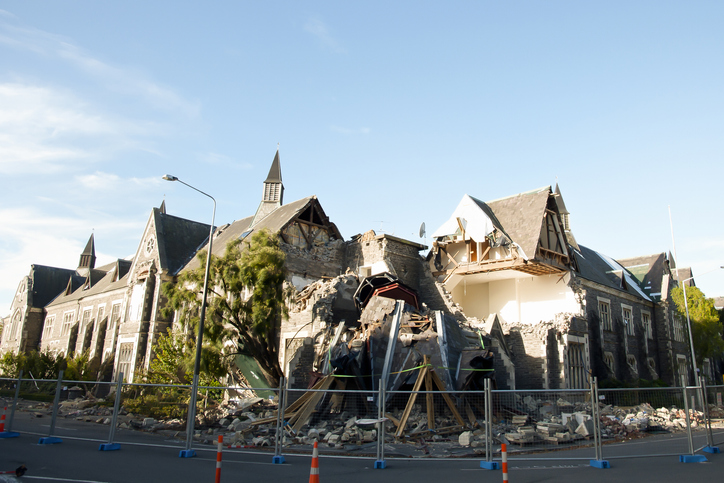This blog was inspired by a recent public talk attended by a member of the CSI team, where respected emergency […]
This blog was inspired by a recent public talk attended by a member of the CSI team, where respected emergency management specialist David Parsons spoke about seismic risk, uncertainty and the dangerous assumptions that still persist in how we plan for low-probability events. One point in particular stood out: the idea that a “one-in-500-year event” could happen twice tomorrow, and that we are still framing risk as something far off, rather than inevitable.
It raised a timely question: if we know these events are possible, why do we keep getting caught off guard?
Despite advances in modelling, planning and structural design, the gap between predicted risk and actual outcomes remains stubbornly wide. Recent history has shown us that even well-developed systems can fall short under pressure. It’s time to take a closer look at why.
The term “one-in-500-year event” is often used to describe low-probability, high-impact natural events. But it is widely misunderstood. It doesn’t mean an event will only happen once every 500 years. Instead, it means there is a 0.2 percent chance of it occurring in any given year. That means multiple such events can absolutely happen within a short timeframe, and increasingly, they are.
This statistical framing can lull organisations and communities into a false sense of security. As Parsons noted, by treating these events as rare, we often fail to prepare for them meaningfully. That mindset can have serious consequences.

The 2011 Christchurch earthquake offers a powerful example. It struck just five months after the city had already been rocked by a major quake. The damage was immense. Buildings collapsed, lives were lost, and the central city was forever changed.
This was not just about unpredictable seismic activity. It was also about how prepared we were, or weren’t, despite living in a country known for its seismic risk. Christchurch showed us what happens when risk modelling is not paired with action, when known vulnerabilities are left unaddressed, and when systems are stretched beyond their design assumptions.
New Zealand has world-class engineers and planners. But even the most sophisticated models need to be translated into practical readiness. Preparedness is not about eliminating risk altogether. It is about building resilience into our systems, ensuring infrastructure can tolerate extremes, and being ready to act before the damage is done.
That means reviewing ageing infrastructure, revisiting past assessments, and making sure quality assurance is embedded at every stage, not treated as an afterthought. It also means improving communication and coordination between disciplines, so that risks are understood and owned collectively.
At CSI, our work is grounded in this kind of proactive thinking. We support clients through:
We are not in the business of guesswork. We are here to help clients make decisions based on evidence, context and experience.
The idea that a one-in-500-year event might strike tomorrow, or twice in the same year, is not as far-fetched as it once seemed. It’s a reminder that probability cannot be the only lens through which we plan.
Events like the Christchurch quake, and insights shared by thought leaders like David Parsons, underscore the urgent need to shift our mindset from unlikely to inevitable. And that shift starts with how we talk about risk in the first place.
We would be keen to hear what NDT solutions you would like for your structural resilience investigations.
If you would like to find out more about the Non-Destructive Testing Services (NDT) that we offer click here!
Click here for a list of our services.
Call Us On 0800 33 77 67 Or Request a Quote Here.